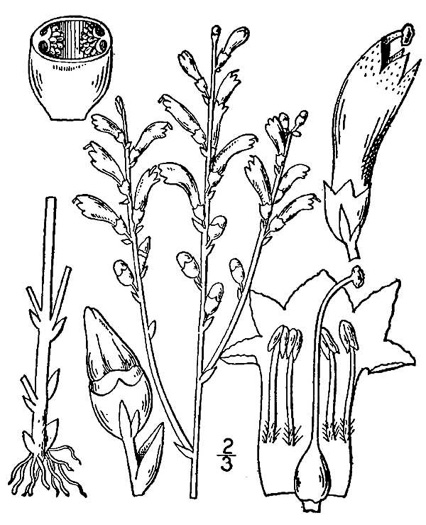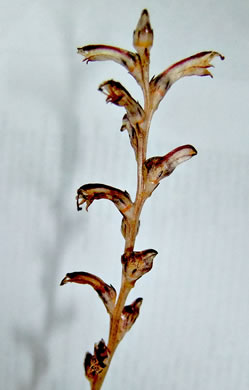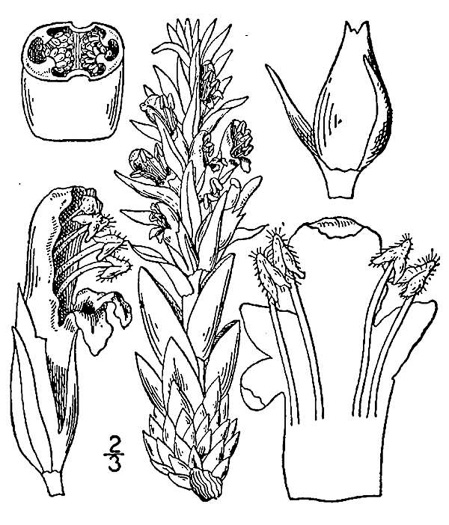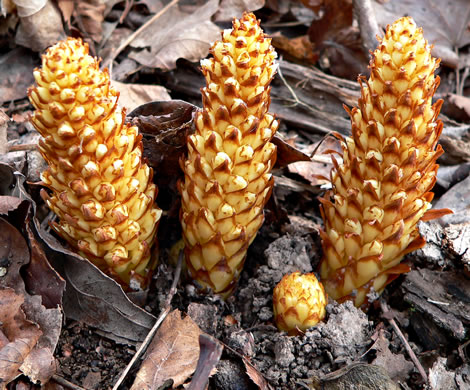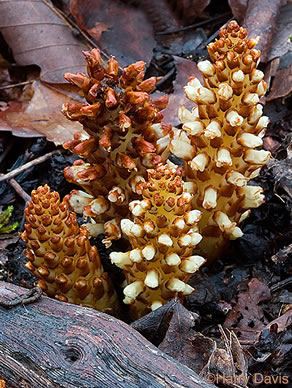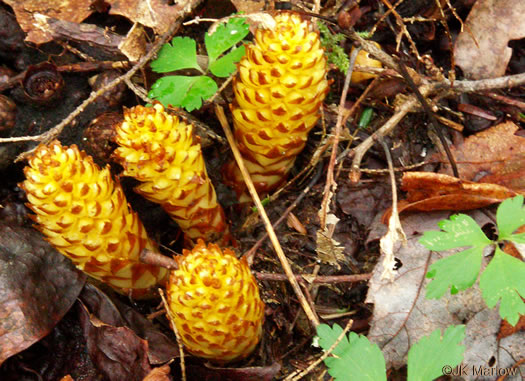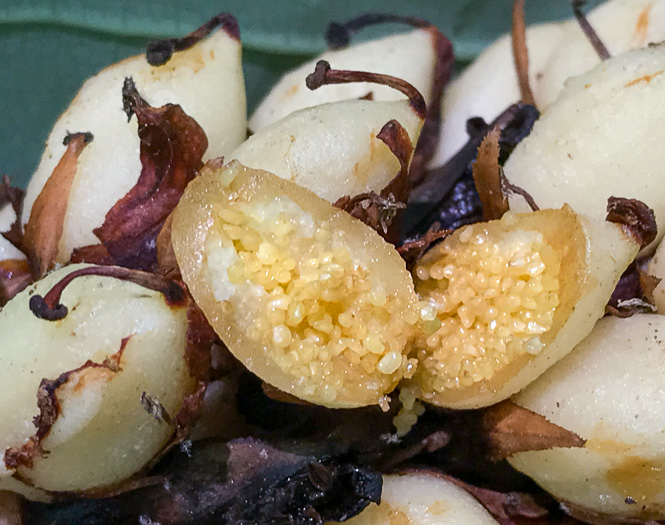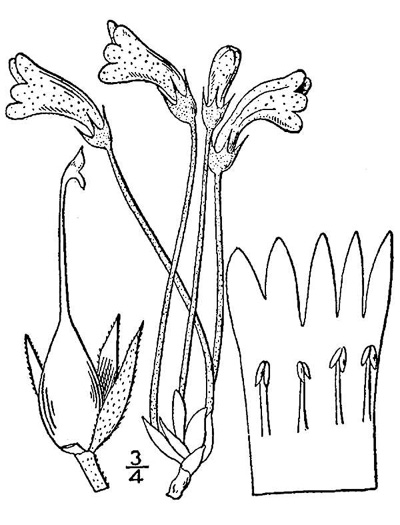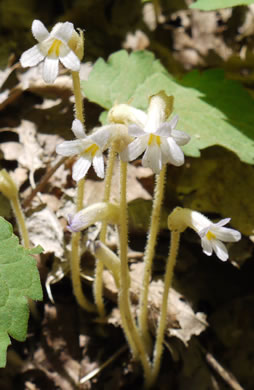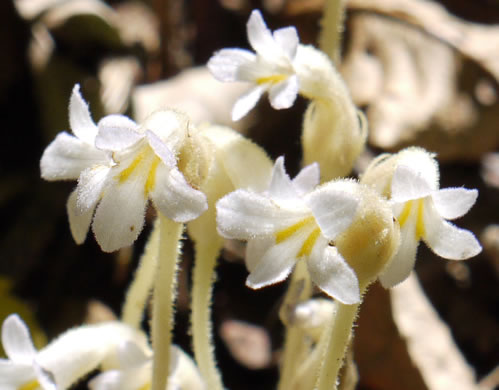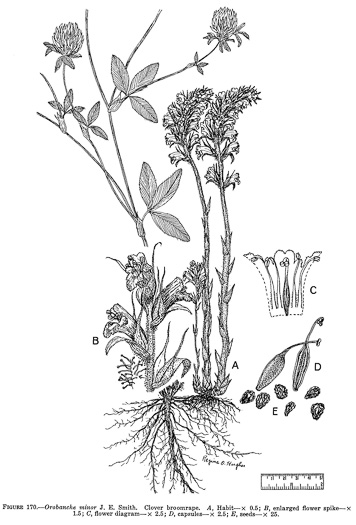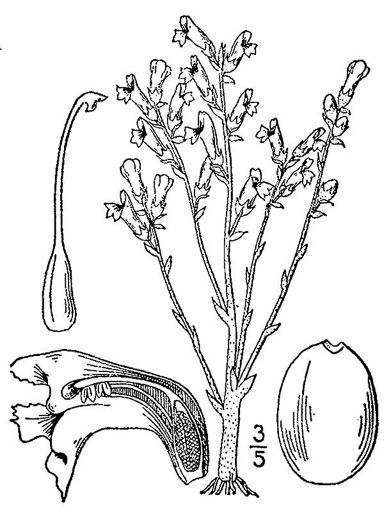Hovering over an image will enlarge it and point out features (works better on desktop than on mobile).
![]() A camera indicates there are pictures.
A camera indicates there are pictures.
![]() A speaker indicates that a botanical name is pronounced.
A speaker indicates that a botanical name is pronounced.
![]() A plus sign after a Latin name indicates that the species is further divided into varieties or subspecies.
A plus sign after a Latin name indicates that the species is further divided into varieties or subspecies.
Most habitat and range descriptions were obtained from Weakley's Flora.
Your search found 5 taxa in the family Orobanchaceae, Broomrape family, as understood by Vascular Flora of the Carolinas.

![]()
![]() Common Name:
Beechdrops
Common Name:
Beechdrops
Weakley's Flora: (4/24/22) Epifagus virginiana FAMILY: Orobanchaceae
SYNONYMOUS WITH PLANTS National Database: Epifagus virginiana FAMILY: Orobanchaceae
SYNONYMOUS WITH Vascular Flora of the Carolinas (Radford, Ahles, & Bell, 1968): Epifagus virginiana 169-01-001 FAMILY: Orobanchaceae
Habitat: Moist to rather dry forests under and parasitic on Fagus grandifolia
Common (uncommon in Carolina Coastal Plain) (rare in GA Coastal Plain)
Native to the Carolinas & Georgia

![]()
![]() Common Name:
Squawroot, Bearcorn, Oakdrops
Common Name:
Squawroot, Bearcorn, Oakdrops
Weakley's Flora: (4/24/22) Conopholis americana FAMILY: Orobanchaceae
SYNONYMOUS WITH PLANTS National Database: Conopholis americana FAMILY: Orobanchaceae
SYNONYMOUS WITH Vascular Flora of the Carolinas (Radford, Ahles, & Bell, 1968): Conopholis americana 169-02-001 FAMILY: Orobanchaceae
Habitat: Rich, moist forests, under and hemiparasitic on Quercus species
Common in Mountains, uncommon or rare elsewhere
Native to the Carolinas & Georgia

![]()
![]() Common Name:
One-flowered Cancer-root, One-flowered Broomrape, Ghostpipe
Common Name:
One-flowered Cancer-root, One-flowered Broomrape, Ghostpipe
Weakley's Flora: (4/24/22) Aphyllon uniflorum FAMILY: Orobanchaceae
INCLUDED WITHIN PLANTS National Database: Orobanche uniflora FAMILY: Orobanchaceae
INCLUDED WITHIN Vascular Flora of the Carolinas (Radford, Ahles, & Bell, 1968): Orobanche uniflora 169-03-001 FAMILY: Orobanchaceae
Habitat: In a wide diversity of forests
Common in NC Mountains (uncommon elsewhere in NC); uncommon in GA Mountains (rare elsewhere in GA-NC-SC)
Native to the Carolinas & Georgia

Common Name: Lesser Broomrape, Small Broomrape, Hellroot
Weakley's Flora: (4/24/22) Orobanche minor FAMILY: Orobanchaceae
SYNONYMOUS WITH PLANTS National Database: Orobanche minor FAMILY: Orobanchaceae
SYNONYMOUS WITH Vascular Flora of the Carolinas (Radford, Ahles, & Bell, 1968): Orobanche minor 169-03-002 FAMILY: Orobanchaceae
Habitat: Mesic hammocks, cultivated fields, parasitic on various hosts, especially Trifolium, Nicotiana tabacum, and Solanum lycopersicum
Rare
Non-native: Eurasia

Common Name: Branching Broomrape, Hemp Broomrape, Branched Broomrape
Weakley's Flora: (4/24/22) Phelipanche ramosa FAMILY: Orobanchaceae
SYNONYMOUS WITH PLANTS National Database: Orobanche ramosa FAMILY: Orobanchaceae
Habitat: Disturbed areas, mowed road verges, medians, and lawns
Waif(s)
Non-native: Asia
Your search found 5 taxa. You are on page PAGE 1 out of 1 pages.

